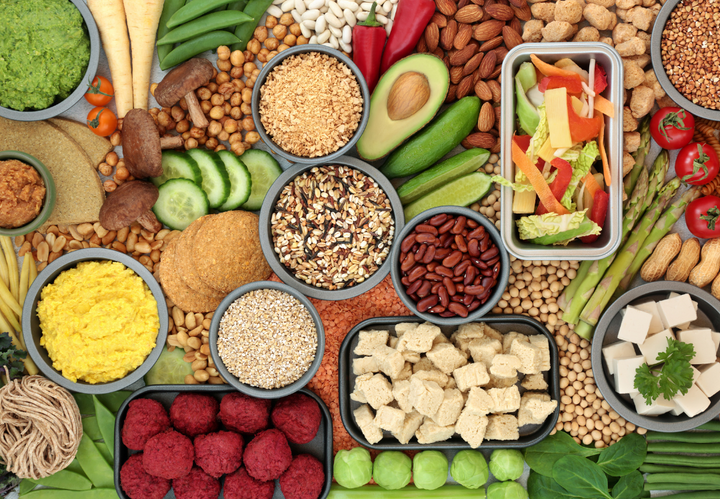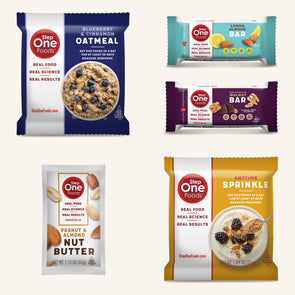
What are the benefits of plant sterols for high cholesterol?

Understanding cholesterol
Cholesterol is a waxy substance found throughout the body. Contrary to popular belief, some cholesterol is actually good as it plays a vital role in certain bodily functions like building cells, producing hormones, and even creating bile. But, cholesterol can be bad if you have too much of it floating around. When cholesterol levels in the bloodstream are too high, this can pose a risk to your heart health.
There are two main types of cholesterol that are typically measured – low-density lipoprotein (LDL) and high-density lipoprotein (HDL). LDL is often dubbed the “bad” cholesterol while HDL is referred to as the “good” cholesterol. LDL can contribute to plaque buildup in the arteries, increasing your risk of heart disease and stroke. HDL helps remove cholesterol from the body, transporting it to the liver for processing and elimination. Although high HDL levels are good, they are not infinitely protective. What’s typically more important is if your HDL is too low.
On balance, of the two types of cholesterol, LDL is far more important in determining outcomes. Fortunately, you can help lower your LDL cholesterol levels with lifestyle changes like switching to a heart-healthy diet, exercising and cutting out tobacco use. In some cases, your health care provider may recommend cholesterol-lowering medications like statins.

What are plant sterols (phytosterols)?
One way to naturally lower LDL cholesterol is by getting more plant sterols, also known as phytosterols, in your diet. Phytosterols come in two main forms - sterols and stanols - but are generally referred to as “plant sterols” regardless of type. Plant sterols and stanols are natural components found in plants. Diets rich in plant-based foods are diets that are rich in plant sterols. Interestingly, plant sterols are actually the plant version of cholesterol. Just like we have cholesterol throughout our bodies, plants have plant sterols in their cell walls.
Do plant sterols lower cholesterol?
So, if plant sterols are just ‘plant cholesterol,’ wouldn’t you want to avoid adding them to a heart-healthy diet? It’s actually quite the opposite, as plant sterols have been shown to lower cholesterol levels. In fact, plant sterols can help lower LDL cholesterol levels by as much as 15%. Here’s how they work:
While plant sterols serve a similar function to cholesterol for plants, these compounds are different from dietary and bile cholesterol in our bodies. But, when we eat plant sterols, our body treats them - at least initially - as dietary cholesterol. This leads to the body trying to absorb them through the normal cholesterol pathways, even though their chemical structure is slightly different than that of food and bile cholesterol. That slight structural difference makes absorption difficult or even impossible. Eventually, the body does recognize that plant sterols aren’t dietary/bile cholesterol and will flush them out.
But how does this help with lowering your LDL cholesterol levels? Well, since the body is busy trying to process these cholesterol fakes, our cholesterol receptors stay busy and bile and dietary cholesterol don’t have as many cholesterol receptors to access. This leads to less cholesterol absorption in the intestinal tract and a decrease in cholesterol levels in the bloodstream.
What foods are high in plant sterols?
If you want to start incorporating more plant sterols in your diet, the key is focusing on more plant-based foods. Naturally, these are going to be high in plant sterols. Generally, the foods that are richest in plant sterols are nuts, whole grains, fruits and vegetables.
Some supplements contain phytosterols, but just taking those may not be enough. Plant sterols are most effective when taken with food. This is because the sterols need to compete with bile and food cholesterol absorption as triggered by the digestive process. We’ll touch on this more in the next section.
Step One Foods also uses plant sterols in our cholesterol-lowering foods, giving you another easy way to add some plant sterols to your diet in the setting of normal digestion.
Why Step One Foods uses plant sterols in their cholesterol-lowering foods
Step One Foods snacks contain 1 gram of plant sterols per serving. Our foods are clinically formulated to help lower cholesterol, so including plant sterols in our foods was a natural fit!
As we talked about, plant sterols are not easily absorbed by the body and they help block the absorption of bile cholesterol. Here’s why that’s important. Our liver (and gallbladder if you have one) releases bile every time we eat, but not all of it is used up in the digestive process. What’s left over gets reabsorbed. Unfortunately, so does the bad cholesterol left over in it.
So, with plant sterols keeping those bile cholesterol receptors busy, bile reabsorption is reduced and cholesterol levels drop in the bloodstream. This also explains why plant sterols should be consumed with food since plant sterols can only actively compete with bile if it’s present in the intestinal tract. With Step One Foods, you’ll trigger the digestion process while also getting a dose of plant sterols.
Beyond that, Step One Foods also contain three other essential nutrients to help lower cholesterol. With each Step One Foods serving, you’ll also get clinically meaningful doses of whole food fiber, Omega-3s and antioxidants. Fiber can help bind to cholesterol particles and move them out of the intestinal tract. Omega-3s can help reduce inflammation, lower triglycerides and raise HDL. Antioxidants can help prevent plaque buildup. Best of all, this potent formulation tastes great and comes in different varieties like bars, oatmeal, pancakes and smoothies. Plus, the synergistic effect of multiple nutrients affecting cholesterol levels can be profound: While plant sterols alone can yield LDL reductions up to 15%, Step One’s combination can yield nearly 40% LDL reductions in some individuals.
How to incorporate more plant sterols and stanols into your diet
As we talked about earlier, the foods with the highest amounts of plant sterols are nuts, whole grains, fruits and vegetables. Let’s take a quick look at each of these food categories and how you can get them into your diet:
Nuts - Nuts contain some of the highest amounts of plant sterols. Some common options are pistachios, almonds, walnuts and cashews.
It’s important to note that eating them plain is the best way to reap the heart-healthy benefits. Nuts that are salted and/or flavored are often high in sodium and could have counterproductive effects on heart health by raising blood pressure when eaten consistently.
Whole grains - Whole grains and whole grain foods are also rich in plant sterols. Oatmeal and flaxseed are some good examples of whole grains that provide higher amounts of plant sterols per serving. Wheat germ is also a good source.
You could try incorporating some of these in smoothies for an easy way to get more plant sterols in. Alternatively, a bowl of oatmeal with some other heart-healthy foods like fruit and fat-free yogurt is a great way to start the day.
Fruits - Fruits are not quite as high in plant sterols as nuts and whole grains, but their vitamin content can offer other health benefits as part of an overall balanced diet.
Some good fruits for plant sterols include strawberries, bananas and blueberries. Adding some fruit to your yogurt, throwing it in a smoothie or even enjoying it on its own as a snack is a great way to incorporate more fruits into your daily meal plan.
Vegetables - Vegetables also tend to have lower plant sterol amounts than nuts and whole grains. Of course, vegetables are still a healthy part of any diet and they have plenty of benefits beyond their plant sterol content. Some good veggies to add to a heart-healthy diet include carrots, Brussels sprouts, broccoli and spinach.
Veggies can be great snacks on their own, but they can also help to make some creative choices like roasting them, adding them into one-pot dishes or even throwing something like spinach into your daily smoothie. It’s important to get some variety so you benefit from the unique nutrient compositions of different vegetables and so you don’t get bored with your dietary changes.
Finally, one of the best and tastiest ways to get more plant sterols is with Step One Foods. Step One Foods includes plant sterols along with other clinically proven heart-healthy ingredients to help lower cholesterol in every serving. Adding some Step One Foods to your day is a great way to make sure you are getting the right levels of the right nutrients to meaningfully impact heart health.

Try Step One Foods Today!
Looking to get more plant sterols and other heart-healthy ingredients in your diet? Step One Foods can help. Following a heart-healthy diet is important, but it’s not always convenient. Making a snack or a full heart-healthy meal isn’t always an option when you need something quick. But Step One Foods offers tasty, convenient options that include plant sterols, whole food fiber, Omega-3 fatty acids and antioxidants all in one science-backed package.
To get the right amount of plant sterols to affect cholesterol levels, all you have to do is enjoy two Step One Foods snacks per day. And because our foods are specifically formulated to contain high levels of multiple nutrients that help lower cholesterol you can see LDL reductions in as little as 30 days. In fact, Step One Foods has been proven to significantly lower cholesterol in that short period of time when evaluated in a randomized controlled clinical trial carried out by Mayo Clinic and the University of Manitoba. This solution works because not only is it based in science, but because it’s really easy to use. Head to our online store to order Step One Foods today!
Customer Favorites

30-Day Starter Pack

Dark Chocolate Crunch Bar

